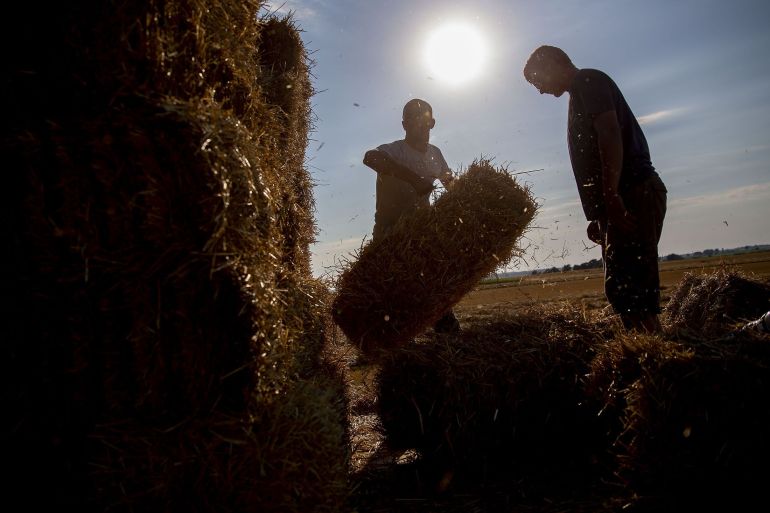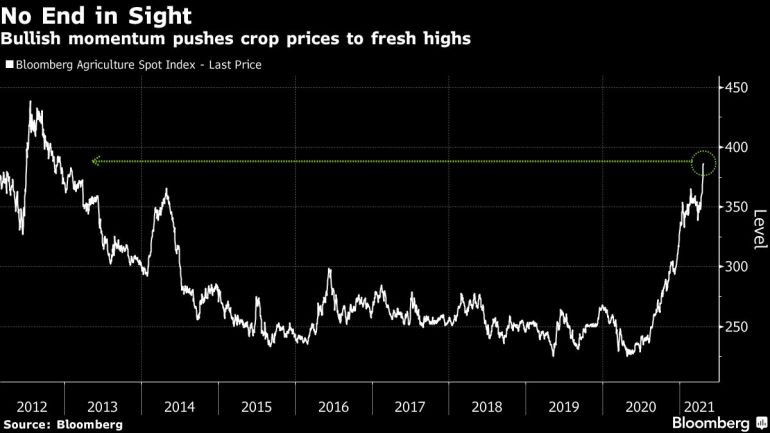Will soaring US crop prices show up on a grocery shelf near you?
Prices of essential food commodities including wheat, corn and soybeans are surging to the highest levels since 2013, fuelling concerns over food price inflation.

A crop rally in the U.S. is threatening to make essential food commodities dramatically more expensive, and the costs could soon spill over onto grocery store shelves.
Wheat, corn and soybeans, the backbone of much of the world’s diet, are all surging to the highest since 2013 after gains last week had some analysts warning that a speculative bubble was forming.
Keep reading
list of 4 itemsFood pantries for hungry Filipinos get tagged as communist
Amazon unveils pay-by-palm technology at some Whole Foods stores
‘No food in the fridge’: A gruelling Ramadan in Lebanon
Bad crop weather in key-producing countries is a major culprit. Dryness in the U.S., Canada and France is hurting wheat plants, as well as corn in Brazil. Rain in Argentina is derailing the soy harvest. Add to that the fears of drought coming to the American Farm Belt this summer.
Meanwhile, China is gobbling up the world’s grain supplies, on track to take in its biggest haul of corn imports ever as it expands its massive hog herd. Rumors are swirling that the Asian nation is working on 1 million metric tons of new corn purchases, according to Arlan Suderman, chief commodities economist at StoneX.
“The agriculture sector looks very appealing right now and the money is chasing it,” Suderman said.
The agricultural rally is stirring food inflation fears, because staple crops heavily influence consumer prices for everything from bread and pizza dough to meat and even soda. The Bloomberg Agriculture Spot Index — which tracks key farm products — soared the most in almost nine years last week.
The higher prices are also helping to drive even broader gains across the commodities complex, with metals such as palladium and copper rallying on a comeback in industrial operations around the world.

Wheat climbed as much as 4.7% to $7.46 a bushel, the priciest since February 2013. Fresh buyers are starting to step in, with both Egypt and Bangladesh issuing new tenders.
Corn rose by the 25-cent exchange limit to as high as $6.575 a bushel, the highest since May 20, 2013. Soybeans increased as much as 1.9% to $15.44 a bushel, the highest since June 5, 2013.
Soybean oil traded at levels not seen in a decade. An expected increase in Canada’s canola acreage won’t be enough to alleviate tight inventories, according to Farmers Business Network. The U.S. will update planting progress and crop condition figures later Monday in Washington.
Bullish investor momentum has yet to fade. Net long soybean bets surged the most since September in the week through April 20, and money managers flipped to a positive stance on wheat.
Still, soybean, wheat and corn futures in Chicago are all trading in overbought territory with their 14-day relative strength indexes above 70, indicating that prices may have risen too far, too fast. Values declined in China, signaling a possible calming of shortage fears as summer crop plantings progress and hefty purchases of foreign supplies continue to arrive at ports.